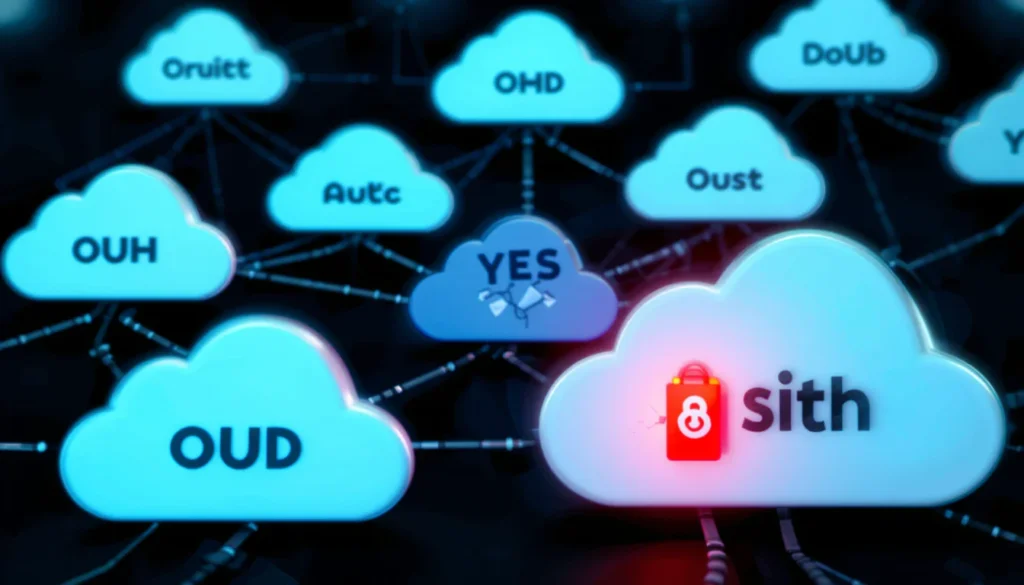Overview
A new cybersecurity threat has emerged as researchers uncover widespread OAuth misconfigurations in over 120 popular cloud applications, leaving thousands of businesses vulnerable to unauthorized access and potential data breaches. This critical flaw is not due to an inherent vulnerability in OAuth itself but results from improper implementation and lack of patching. With more enterprises relying on third-party apps and integrations, this issue poses a growing and underestimated risk to cloud environments.
Key Facts
- Over 120 cloud-based applications were identified with flawed OAuth configurations.
- Misconfigurations allow unauthorized third-party token access without user consent.
- Affected apps include CRM platforms, productivity suites, and financial tools.
- Attackers can use OAuth tokens to bypass traditional login methods.
- The issue stems from developers failing to validate redirect URIs or mismanaging client secrets.
- Major cloud providers like Microsoft and Google are aware but blame lies on app developers.
- Exploits can result in full account compromise if OAuth scopes include read/write privileges.
- No widespread exploitation reported yet, but the threat level is critical.
What’s Verified and What’s Still Unclear
✅ Verified:
- The existence of flawed OAuth flows in over 120 apps.
- Researchers successfully demonstrated token hijacking scenarios.
- Most issues result from improper validation of redirect URIs and insecure storage of secrets.
❓ Unclear:
- Whether any major organizations have been breached using this vector.
- If threat actors have already weaponized these findings.
- Timeline for widespread remediation by app developers.
Timeline of Events
- May 2025: Independent researchers start investigating suspicious OAuth flows.
- Early June 2025: Initial list of vulnerable apps shared with cloud providers.
- Mid-June 2025: Vendors begin silent patching, but many apps remain unpatched.
- June 27, 2025: Research report made public, triggering industry-wide scrutiny.
Who’s Behind It?
The vulnerabilities were uncovered by a joint team of cloud security researchers from Red Hunt Labs and CloudSEK. While no threat actor groups have been officially tied to exploiting these flaws, experts warn that APT groups and ransomware operators are likely to adopt this vector soon. The security community is urging immediate action before mass exploitation begins.
Public & Industry Response
- The cybersecurity community has reacted swiftly, with major advisories issued.
- Microsoft, Google, and AWS have clarified that the issues lie in third-party app implementations, not the OAuth protocol.
- CISOs and cloud security teams are urged to audit all third-party OAuth integrations.
- Some apps have quietly removed OAuth support temporarily.
What Makes This Unique?
Unlike previous OAuth-related breaches, this issue arises not from phishing or brute-force attacks but from inherent design flaws in cloud applications. It highlights a systemic issue in how developers implement authentication standards without adequate security review. With OAuth tokens often carrying broad and persistent permissions, a single misconfiguration could give attackers access to emails, files, calendars, and more—all without alerting the user.
Understanding the Basics
What is OAuth Misconfiguration?
OAuth is a token-based authentication protocol used to allow applications to access user data from another service (e.g., allowing Zoom to access your Google Calendar). However, when developers fail to configure redirect URIs securely or expose sensitive credentials, attackers can intercept or reuse tokens to gain access without needing your password.
OAuth Misconfigurations typically include:
- Weak or wildcard redirect URIs
- Exposed client secrets in frontend code
- Insecure token storage
- Failure to enforce proper scopes
These issues allow token theft, session hijacking, or privilege escalation.
What Happens Next?
Security researchers are calling for a cloud-wide audit of OAuth flows. Organizations should:
- Review OAuth integrations across all SaaS platforms.
- Enforce least privilege OAuth scopes.
- Monitor token issuance and use for anomalies.
- Implement Security Information and Event Management (SIEM) solutions with OAuth-specific detections.
- Developers should use secure libraries and follow OWASP OAuth best practices.
CISA and other agencies may soon add this to their Known Exploited Vulnerabilities (KEV) catalog if exploitation is detected in the wild.
Summary
OAuth Misconfigurations have silently exposed hundreds of cloud applications to unauthorized access risks. While not a protocol flaw, these oversights by app developers can allow attackers to hijack tokens, impersonate users, and access sensitive data. The issue underscores the need for rigorous security practices during app development and integration. Businesses must act now—review, patch, and protect—before opportunistic attackers exploit these gaps.
